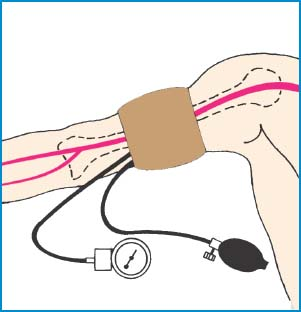Body Jewelry Removal
Piercings and body jewelry may be present on virtually any body part. The most common sites are the ears, nose, tongue, eyebrows, lips, and umbilicus. Less common sites include the nipples and genitals.
Depending on the risk to the patient, the medical interventions to be performed, and your facility’s policy, the doctor may order for body jewelry to be removed to reduce the risk for such complications as electrical burns, aspiration, pressure injuries, or tissue injures. However, urgent medical care should never be delayed while attempting to remove body jewelry.
If you’re helping a patient to remove body jewelry or removing it from an unconscious patient, you must make sure that the patient isn’t harmed during the process and that the patient’s dignity is preserved. You must also take steps to avoid damaging the jewelry during the removal process and retain the jewelry for reinsertion later.
Equipment
Gloves ▪ ring-opening tool or ring-spreading pliers ▪ tongue stabilizer or ring forceps ▪ ball-grabber tool or bead tweezers ▪ lubricating gel ▪ antiseptic solution ▪ personal belongings envelope ▪ Optional: inert plastic radiolucent retainer that’s approved by the Food and Drug Administration (FDA), microbore extension tubing, thick suture material, epidural catheter.
Implementation
Confirm the patient’s identity using at least two patient identifiers according to your facility’s policy.4
Ask the patient whether he’s wearing body jewelry, especially jewelry that isn’t readily visible. If the patient is unconscious, ask the patient’s family about known body jewelry and note the presence of body jewelry during the physical examination.
Verify the doctor’s orders for body jewelry removal and review the patient’s medical record for scheduled diagnostic tests or surgical procedures.
Explain to the patient the reason why the body jewelry has to be removed, and encourage him to ask questions as needed.
Determine the type of body jewelry to be removed.
Ask the patient how long he has had the piercings and whether he requires retainers to maintain their patency.
If required by your facility, ensure that written consent to remove the jewelry is obtained and included in the patient’s medical record.
Put on gloves.
Ask the patient to remove the jewelry himself, if he is able to do so; offer to assist as needed.
If the patient is unconscious, remove the jewelry, following the proper technique for the type of jewelry or body piercing present.5 (See Removing body jewelry.)
Stay updated, free articles. Join our Telegram channel

Full access? Get Clinical Tree


Get Clinical Tree app for offline access

